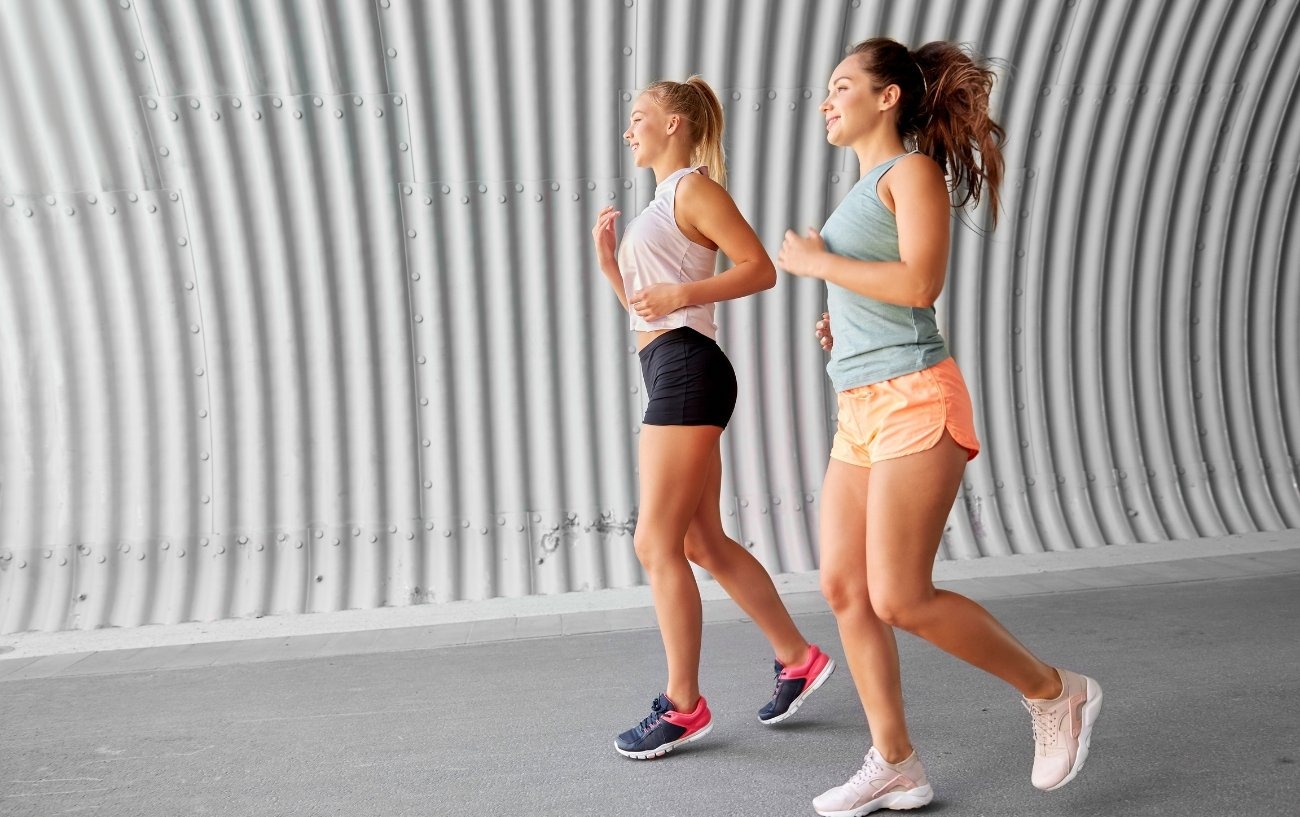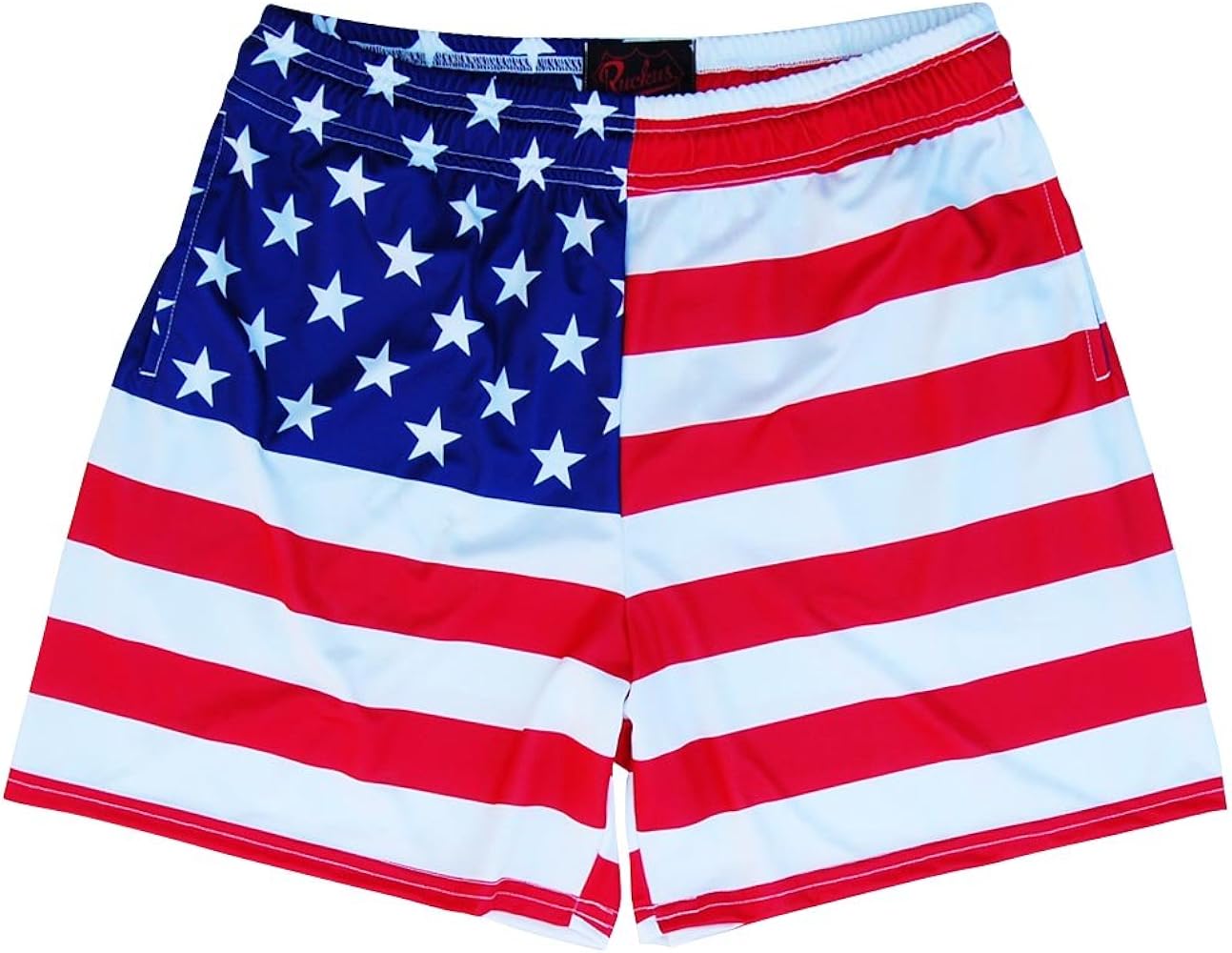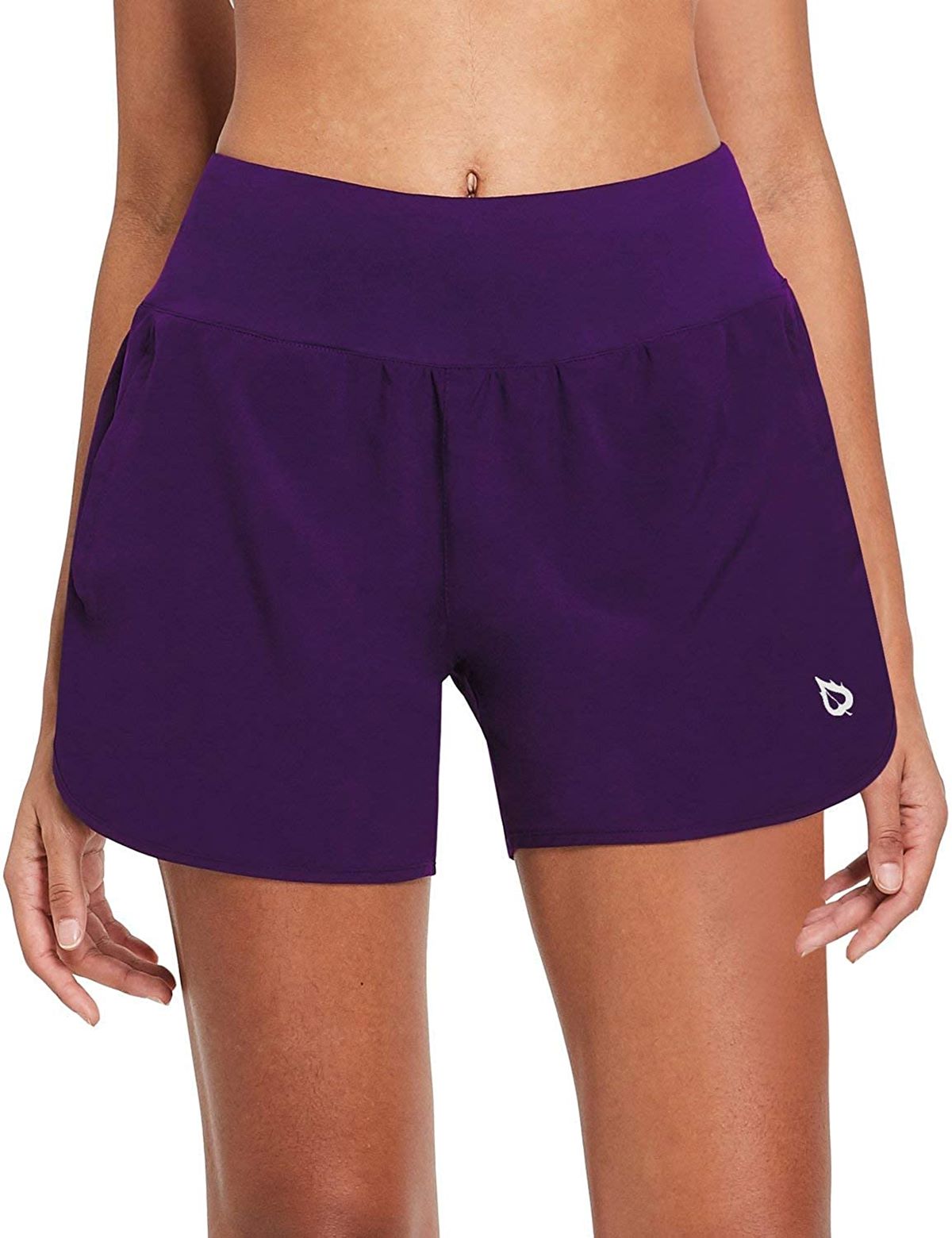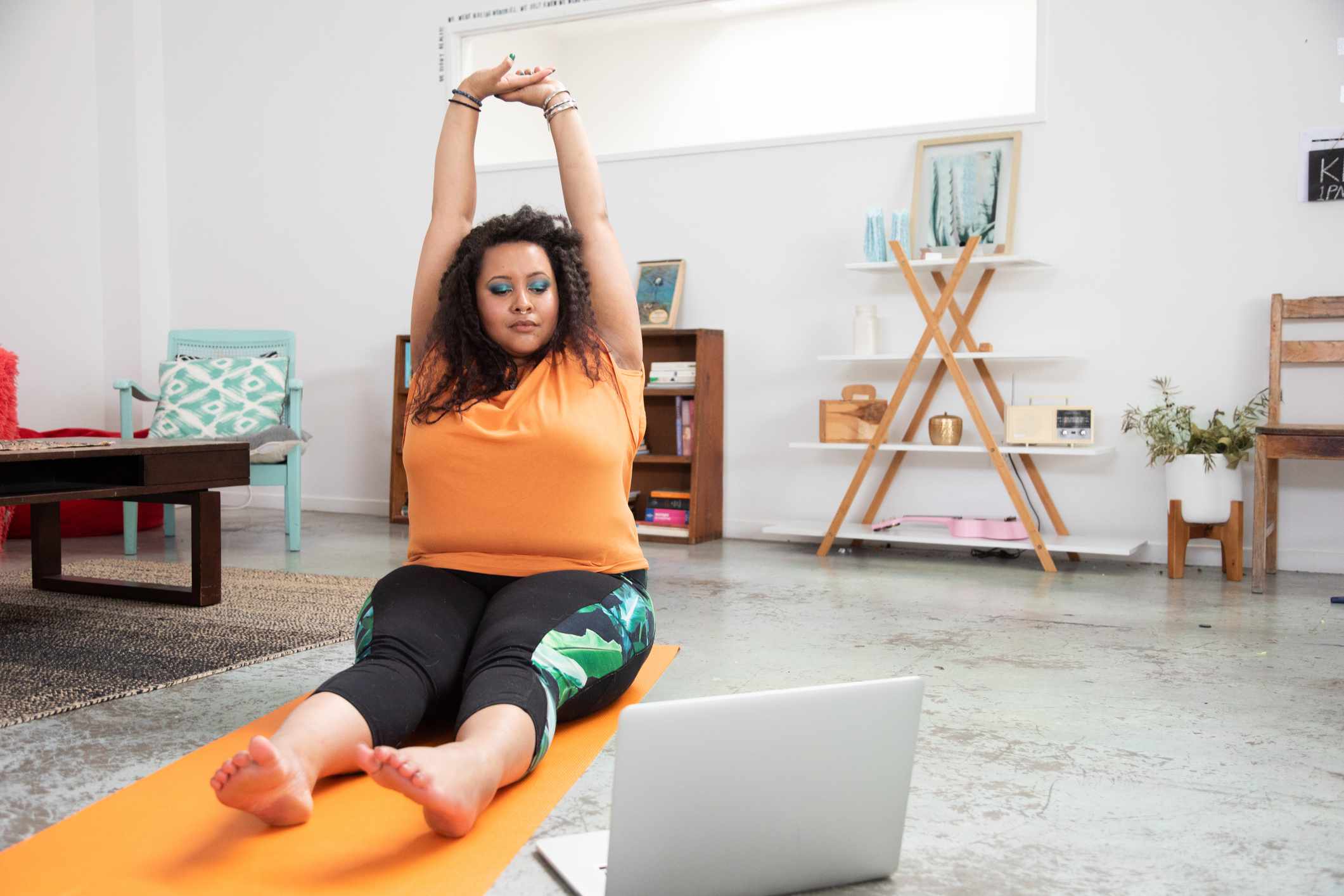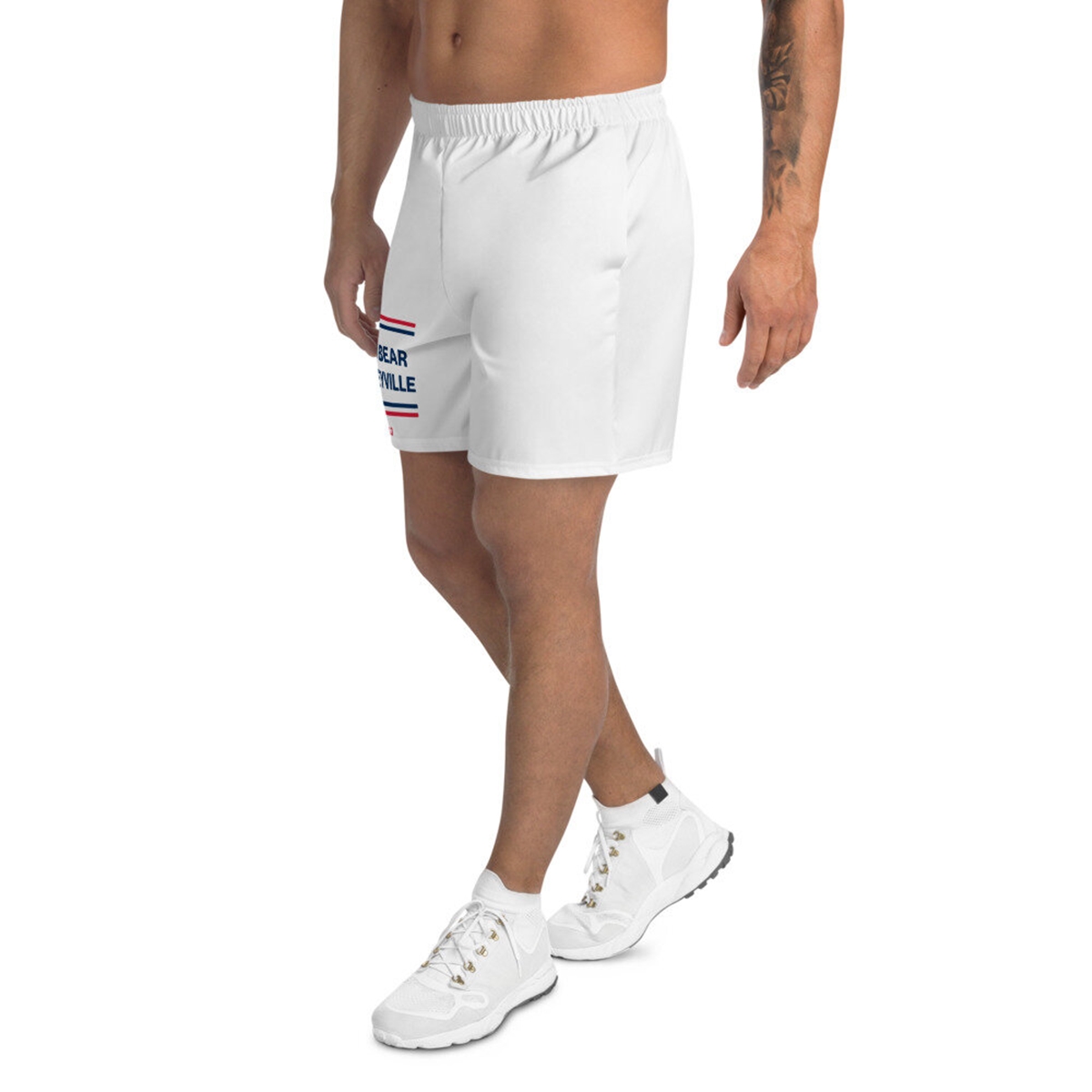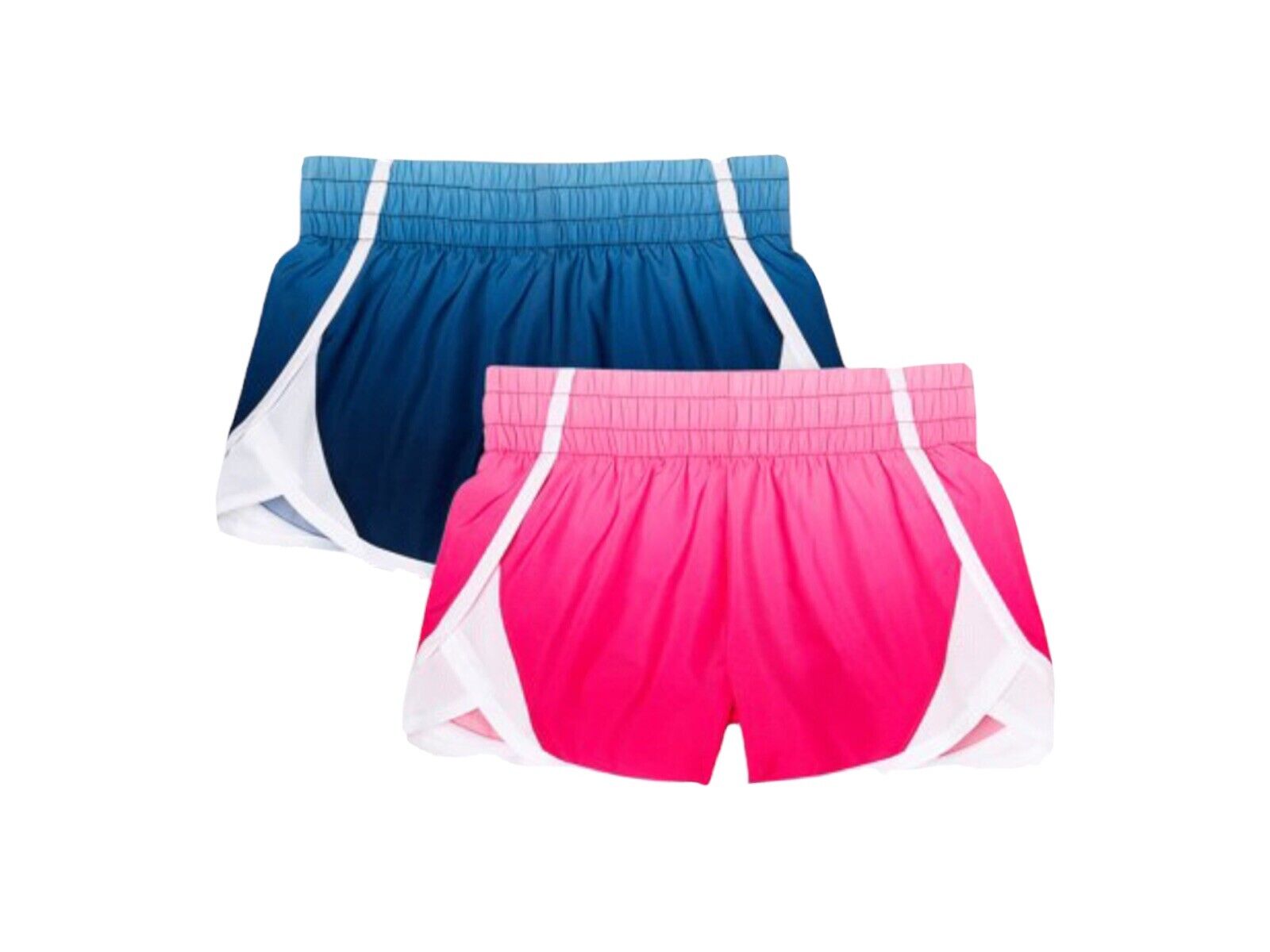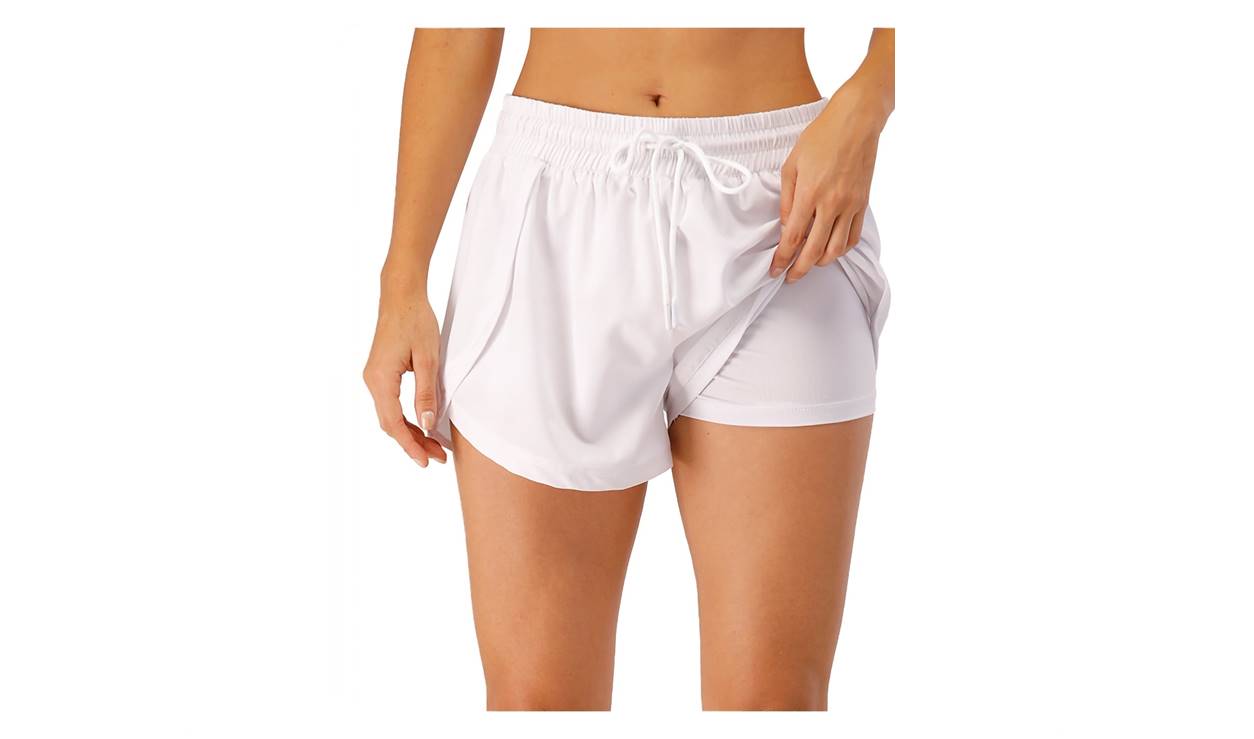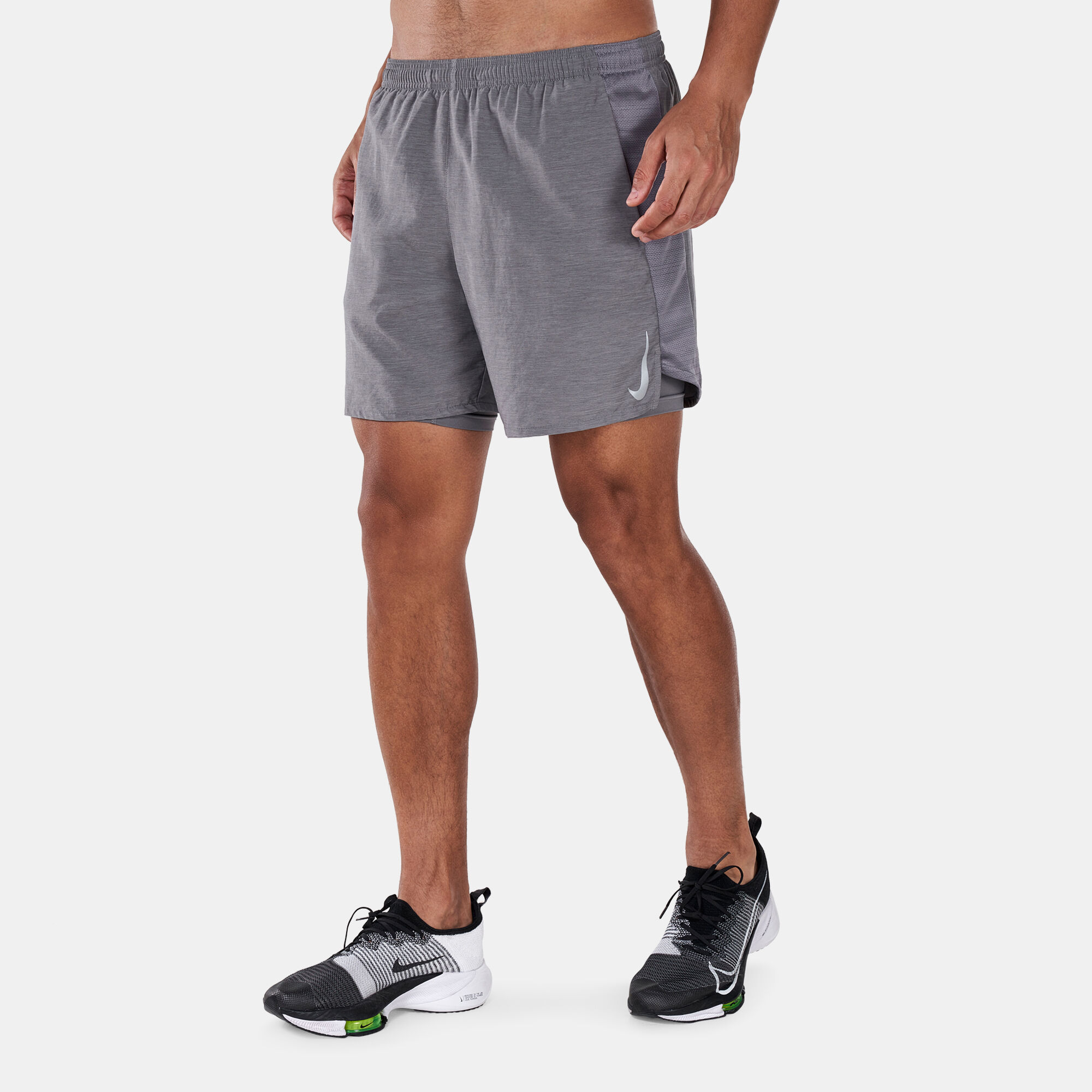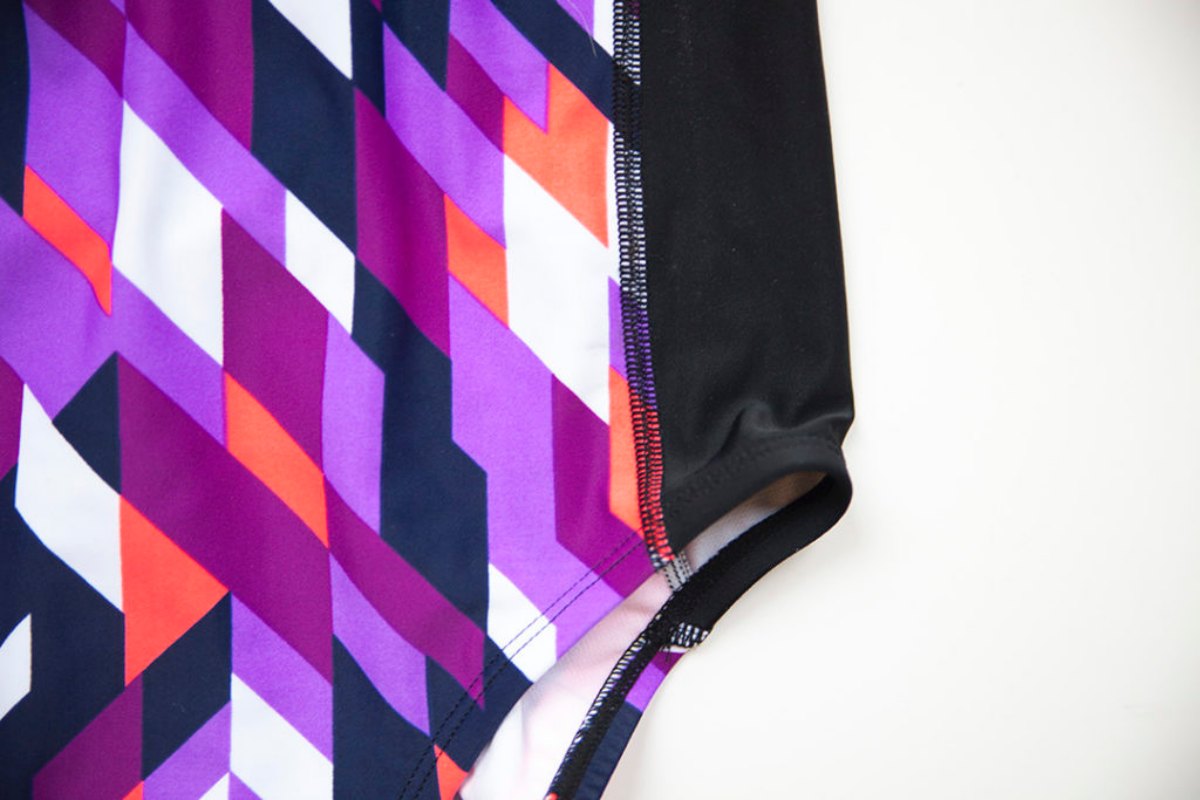

Featured
What Kind Of Stitch For Athletic Wear
Modified: August 19, 2023
Learn about the best stitches for athletic wear to ensure durability and flexibility. Discover featured stitches that are perfect for active lifestyles.
Introduction
Athletic wear has become increasingly popular in recent years, as more people turn to fitness and sports as a way to stay active and maintain a healthy lifestyle. Whether it’s for professional athletes or casual enthusiasts, the demand for high-quality and durable athletic apparel is on the rise.
When it comes to creating athletic wear, one crucial element that often goes unnoticed is the type of stitch used. The right stitch can mean the difference between a garment that lasts through intense workouts and one that falls apart after just a few uses.
In this article, we will explore the different types of stitches commonly used in the production of athletic wear and discuss the factors to consider when choosing the appropriate stitch for a particular garment. Understanding the various stitching options available will not only help manufacturers and designers create durable athletic wear but also enable consumers to make informed decisions when purchasing these garments.
From flatlock stitches to zigzag stitches, each has its own unique characteristics that contribute to the overall strength, flexibility, and stretchability of the fabric. By selecting the most suitable stitch for a specific garment and its intended usage, manufacturers can ensure that the apparel performs well during physical activities, withstands frequent washes, and provides optimal comfort to the wearer.
Whether you’re a fashion designer looking to create your own line of athletic wear or a consumer searching for durable and stylish workout clothes, understanding the different types of stitches used in athletic wear production is essential. So, let’s dive in and explore the world of stitches in athletic wear!
Common Types of Stitches for Athletic Wear
When it comes to stitching athletic wear, several types of stitches are commonly used. Each stitch has its own unique properties and benefits, making it suitable for different types of garments and fabric compositions. Let’s take a closer look at some of the most common stitches used in the production of athletic wear:
- Flatlock Stitch: The flatlock stitch is a popular choice for athletic wear due to its flat, comfortable, and smooth finish. It is primarily used for joining seams in garments that require a high degree of stretch. This stitch is ideal for activewear like leggings, sports bras, and moisture-wicking shirts, as it allows for maximum flexibility and eliminates uncomfortable bulkiness that may cause irritation during physical activities.
- Overlock Stitch: The overlock stitch, also known as a serger stitch, is commonly used to finish raw edges of fabric and join seams simultaneously. This stitch creates a strong, durable, and flexible seam that prevents fraying. Overlock stitches are often seen on the inside of athletic wear garments to secure the edges and provide extra reinforcement. This stitch is particularly useful for fabrics that have a tendency to fray, such as stretchy performance fabrics and moisture-wicking materials.
- Coverstitch: The coverstitch is a versatile stitch that combines the functionality of a seam stitch and a topstitch. It is often used in athletic wear for hemming, binding, and decorative topstitching. The coverstitch creates a neat, stretchy, and professional-looking finish that is commonly seen on the hems of leggings, sweatpants, and athletic t-shirts. This stitch allows for excellent fabric recovery and prevents seams from popping or tearing during intense workouts or stretches.
- Zigzag Stitch: The zigzag stitch is widely used in athletic wear as it allows for a high degree of stretch and flexibility. This stitch is commonly used to reinforce seams, attach elastic bands, and create decorative effects. It is often seen on waistbands, cuffs, and areas that require optimal stretch, such as the underarm and crotch regions. The zigzag stitch provides strength and durability while allowing the fabric to move freely, making it an excellent choice for sportswear and active apparel.
These are just a few examples of the stitches commonly used in the production of athletic wear. Each stitch has its own attributes and benefits, and the choice of stitch depends on the specific requirements of the garment and the desired functionality. By understanding the different types of stitches available, designers and manufacturers can create athletic wear that not only looks great but also performs exceptionally well during physical activities.
Flatlock Stitch
The flatlock stitch is a popular choice for athletic wear due to its unique construction and flexibility. This stitch is commonly used in garments that require a high degree of stretch and movement, making it ideal for activewear like leggings, sports bras, and moisture-wicking shirts.
The flatlock stitch is characterized by its flat, comfortable, and smooth finish. Unlike traditional stitches that create a raised seam, the flatlock stitch creates a flat seam by interlocking the fabric layers together. This not only eliminates uncomfortable bulkiness but also reduces the risk of chafing or irritation during physical activities.
One of the key advantages of the flatlock stitch is its exceptional stretchability. The stitch allows the fabric to stretch and recover without breaking the seam, making it highly resistant to tearing or popping open during intense movements. This is particularly important in athletic wear, where garments need to withstand a wide range of motions and stretches without compromising their structural integrity.
In addition to its stretchability, the flatlock stitch also offers great durability. The interlocking technique of this stitch creates a strong and secure seam, ensuring that the garment can withstand repeated use and frequent washes. This is crucial for athletic wear, which is often subjected to rigorous workouts and regular laundering.
Another benefit of the flatlock stitch is its aesthetic appeal. The flat, smooth seam created by this stitch gives the garment a professional and polished look, both on the inside and the outside. This makes it a popular choice for visible seams, such as leggings or t-shirts, where the quality of the finish is essential for a premium appearance.
When using the flatlock stitch, it is important to ensure that the fabric layers are properly aligned to achieve a clean and even seam. The tension and thread selection also play a significant role in achieving optimal results. It is recommended to use a polyester or nylon thread that matches the fabric’s stretch and weight to ensure a strong and flexible seam.
Overall, the flatlock stitch is a versatile and practical choice for athletic wear. Its flat, comfortable finish, exceptional stretchability, durability, and aesthetic appeal make it an excellent option for creating high-performance activewear that not only looks great but also performs exceptionally well during various physical activities.
Overlock Stitch
The overlock stitch, also known as a serger stitch, is another commonly used stitch in the production of athletic wear. This stitch is known for its ability to finish raw edges of fabric while simultaneously joining seams, creating a strong and durable finish.
The overlock stitch is particularly useful in athletic wear because it helps prevent fraying and adds reinforcement to the garment. It creates a neat and finished edge, ensuring that the fabric doesn’t unravel during intense workouts or frequent washes. This is especially important for fabrics that have a tendency to fray, such as stretchy performance fabrics and moisture-wicking materials.
The main advantage of the overlock stitch is its versatility. It can be used on a variety of fabric types, including knits, stretch fabrics, and even woven materials. It is often seen on the inside of athletic wear garments, where it securely finishes the edges of seams, reducing the chances of the fabric unravelling or causing irritation to the wearer.
In addition to preventing fraying, the overlock stitch adds strength and durability to the garment. The multiple thread loops created by this stitch ensure that the seam is securely held together, even during vigorous activities. This makes it an excellent choice for sportswear that endures high levels of stress and movement.
The overlock stitch also offers some stretchability, allowing the fabric to move and stretch without causing the seam to break or tear. This is crucial in athletic wear, where flexibility and range of motion are essential for optimal performance. The stretchy nature of the stitch ensures that the garment moves with the wearer, providing comfort and ease of movement.
It’s worth noting that the overlock stitch can have variations in terms of the number of threads used and the stitch width. For athletic wear, a three-thread or four-thread overlock stitch is often used, as it provides a good balance between strength and flexibility. The thread tension and stitch settings can be adjusted to suit the specific fabric composition and the desired level of stretch and durability.
In summary, the overlock stitch is a valuable and versatile stitch for athletic wear. Its ability to finish raw edges, prevent fraying, add strength and durability, and accommodate stretch makes it an essential choice in the production of high-quality sportswear. By utilizing the overlock stitch, manufacturers can ensure that their athletic wear garments remain functional, comfortable, and long-lasting.
Coverstitch
The coverstitch is a versatile stitch commonly used in the production of athletic wear. This stitch combines the functionality of a seam stitch and a topstitch, making it ideal for hemming, binding, and decorative topstitching.
One of the key advantages of the coverstitch is its ability to create a neat, stretchy, and professional-looking finish. It is often used on the hems of leggings, sweatpants, and athletic t-shirts, where a clean and polished appearance is desired. The coverstitch allows the fabric to recover well, preventing the seams from popping or tearing during intense workouts or stretches.
In addition to its aesthetic appeal, the coverstitch also adds durability and strength to the garment. The multiple threads used in this stitch create a secure and reinforced seam that can withstand frequent use and laundering. This makes it a preferred choice for sportswear that undergoes regular wear and tear.
Another advantage of the coverstitch is its flexibility. The stitching line is formed on the top side of the fabric, while the underside creates a series of parallel lines, providing stretch and allowing the fabric to move freely. This is crucial in athletic wear, as it ensures that the garment moves with the wearer and doesn’t restrict their range of motion.
The coverstitch can also be used for other decorative purposes, such as creating contrast stitching or decorative accents. This adds a stylish touch to athletic wear, making it visually appealing and on-trend. The versatility of the coverstitch allows designers to explore various design possibilities and enhance the overall look of their athletic wear collections.
When using the coverstitch, it is important to use the appropriate equipment and settings for optimal results. The thread tension, stitch length, and width can all be adjusted to suit the fabric type and desired outcome. It is recommended to use a stretchable thread, such as polyester or nylon, to ensure that the stitch maintains its elasticity and doesn’t break under stress.
In summary, the coverstitch is a versatile and practical choice for athletic wear. Its ability to create a neat, stretchy, and professional-looking finish, along with its durability and flexibility, makes it an excellent option for hemming, binding, and decorative topstitching. By utilizing the coverstitch, manufacturers can enhance the functional and aesthetic aspects of their athletic wear, ensuring that it performs well and looks great.
Zigzag Stitch
The zigzag stitch is a commonly used stitch in the production of athletic wear, known for its ability to provide stretch and flexibility. This stitch is versatile and can be used for a variety of purposes, such as reinforcing seams, attaching elastic bands, and creating decorative effects.
One of the key advantages of the zigzag stitch is its stretchability. The zigzag pattern of the stitch allows the fabric to stretch and move without causing the seam to break or tear. This is particularly important in athletic wear, where flexibility and range of motion are essential for optimal performance. The stretchy nature of the stitch ensures that the garment moves with the wearer, providing comfort and ease of movement during exercises or sports activities.
In addition to its stretchability, the zigzag stitch also adds durability to the garment. The multiple stitches formed by the zigzag pattern create a strong and secure seam that can withstand constant movement and physical stress. This makes it an excellent choice for areas of the garment that require optimal stretch and reinforcement, such as the underarm and crotch regions.
The zigzag stitch is also valuable for attaching elastic bands to athletic wear. The zigzag pattern allows the elastic to be securely held in place, ensuring a snug and comfortable fit. This is particularly important in activewear like leggings or waistbands, where a secure fit is necessary to prevent slipping or shifting during workouts.
Furthermore, the zigzag stitch can be used for decorative purposes, adding flair and style to athletic wear. Different stitch widths, lengths, and thread colors can be used to create unique and eye-catching designs on the fabric. This allows designers to experiment with various decorative effects, enhancing the visual appeal of their athletic wear collections.
When using the zigzag stitch, it is important to adjust the stitch settings to suit the specific fabric and desired outcome. The stitch width and length can be customized to achieve the desired level of stretch and reinforcement. It is recommended to use a polyester or nylon thread, as these materials offer both strength and stretchiness.
In summary, the zigzag stitch is a versatile and practical choice for athletic wear. Its stretchability, durability, and decorative qualities make it an excellent option for reinforcing seams, attaching elastic bands, and adding unique design elements. By utilizing the zigzag stitch, manufacturers can create athletic wear that not only performs well during physical activities but also stands out with its functional and stylish features.
Factors to Consider When Choosing a Stitch for Athletic Wear
When it comes to choosing the appropriate stitch for athletic wear, there are several important factors that manufacturers and designers need to consider. These factors will help ensure that the stitch selected aligns with the specific requirements of the garment and its intended usage. Here are some key considerations when choosing a stitch for athletic wear:
- Fabric Type: The type of fabric used in athletic wear plays a crucial role in determining the appropriate stitch. Different fabrics have varying levels of stretch, durability, and stability. It’s important to choose a stitch that complements the fabric’s characteristics and allows for optimal performance during workouts or sports activities. For example, stretchy performance fabrics may require stitches with high stretchability, such as the flatlock or zigzag stitch, while more structured fabrics may benefit from the extra reinforcement of the overlock stitch.
- Movement and Flexibility: Athletic wear needs to provide unrestricted movement and flexibility. The stitch chosen should allow the fabric to stretch and recover without compromising the integrity of the seam. Stitches like the flatlock stitch or the zigzag stitch are ideal for providing maximum stretch and flexibility, ensuring that the garment moves freely with the wearer.
- Durability and Strength: Athletic wear is subjected to rigorous workouts, frequent washing, and regular wear and tear. Therefore, selecting a stitch that offers durability and strength is crucial. Stitches such as the overlock stitch or the coverstitch provide extra reinforcement to the seams, preventing them from unraveling and ensuring that the garment withstands high levels of stress.
- Comfort: Comfort is of utmost importance in athletic wear. The selected stitch should not cause irritation, chafing, or discomfort to the wearer. Stitches like the flatlock or the coverstitch create smooth, flat seams that minimize friction, making them ideal for sensitive areas like underarms or waistbands.
- Aesthetic Appeal: While functionality is key, the aesthetic appeal of athletic wear should not be overlooked. The stitch chosen should contribute to the overall visual appeal of the garment. Stitches like the coverstitch or decorative variations of the zigzag stitch can add decorative elements and unique design touches, creating a visually appealing and fashionable look.
It is crucial to consider these factors when selecting the appropriate stitch for athletic wear. By ensuring that the stitch aligns with the specific fabric type, movement and flexibility requirements, durability and strength needs, comfort, and aesthetic preferences, manufacturers and designers can create high-quality athletic wear that not only performs well but also caters to the needs and preferences of the consumers.
Conclusion
Choosing the right stitch for athletic wear is essential for creating garments that are durable, flexible, and comfortable. Each type of stitch – whether it’s the flatlock stitch, overlock stitch, coverstitch, or zigzag stitch – brings its own unique properties and benefits to athletic wear production.
The flatlock stitch offers a smooth and flat finish, providing maximum stretch and comfort. The overlock stitch prevents fraying and adds reinforcement, ensuring that the garment remains intact even during intense workouts. The coverstitch creates a neat and professional-looking finish while providing durability and flexibility for high-performance wear. The zigzag stitch allows for stretch and movement, making it ideal for areas that require optimal flexibility.
When choosing a stitch for athletic wear, it is important to consider factors such as fabric type, movement and flexibility requirements, durability, comfort, and aesthetic appeal. By carefully considering these factors, manufacturers and designers can create athletic wear that not only looks great but also performs exceptionally well during physical activities.
Understanding the different types of stitches available and their suitability for different purposes empowers designers and manufacturers to make informed decisions about which stitches to use in their athletic wear production. It allows them to create garments that meet the demands of athletes and fitness enthusiasts who require high-quality, long-lasting, and comfortable apparel.
In conclusion, the choice of stitch in athletic wear is a critical aspect of the garment’s functionality, durability, comfort, and overall appeal. By selecting the most suitable stitch for the fabric, design, and intended usage, manufacturers can ensure that their athletic wear stands out in terms of both performance and style.
